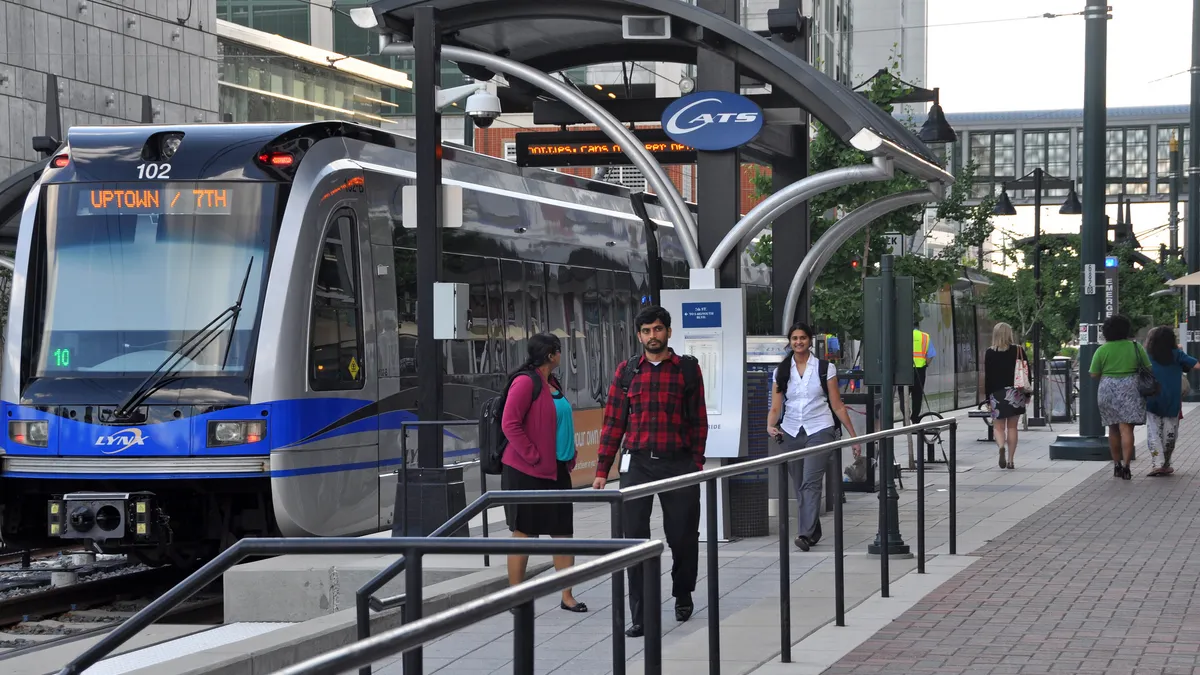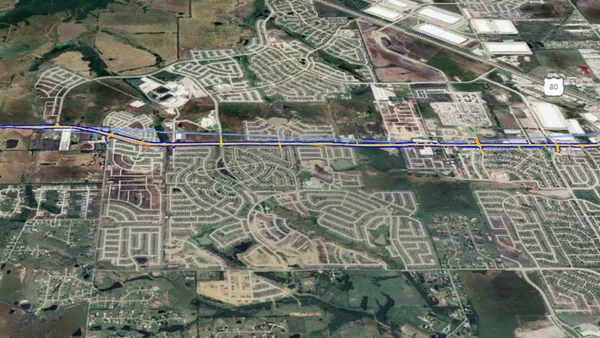Dive Brief:
- Charlotte, NC, officials are considering a $6 billion plan to extend the city's light rail system to southeastern and northern city suburbs, as well as to Charlotte Douglas International Airport, according to the Charlotte Observer.
- Each of the three lines would cost $2 billion, but officials have yet to identify a way to pay for them. There is also doubt as to the potential of strong suburban ridership. Charlotte Area Transit System (CATS) officials said they could possibly receive funding through President Donald Trump's $1 trillion infrastructure initiative.
- The city passed a half-cent tax in 1998 in support of light rail but currently has only one line in operation, with a second scheduled to open in August. Some Charlotte suburbs are also demanding that CATS honor 20-year-old promises for rail lines in their communities before moving on to newer proposals.
Dive Insight:
Light rail travel is growing in popularity, but finding adequate funding is difficult because, among other reasons, federal and state lawmakers want to ensure there will be adequate ridership to justify the cost. The issue of ridership, in fact, has become the main issue in the legal battle behind efforts to build a light rail system in Maryland.
The $5.6 billion Purple Line light-rail project that would serve the Washington, DC, suburbs of Bethesda, MD, is currently on hold as the Federal Transit Administration performs a court-ordered re-evaluation of the estimated ridership for the 16.2-mile line. Last summer, a federal judge halted the project — and, as a result, its $900 million federal grant — after local residents filed a lawsuit questioning the project on several grounds, including ridership. The judge ruled that the original environmental review conducted by rail officials did not take into consideration declining DC Metrorail ridership, even though the Purple Line used that system to account for 25% of its projected users.
Support for the Purple Line project could get a bump from the Trump administration, however, as it appears on its list of 50 high-priority infrastructure projects, which was compiled after Trump took office last month.












